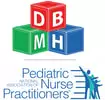Fetal Alcohol Spectrum Disorders
There are 4 sub-types to note:
-
Fetal Alcohol Syndrome (FAS): Most severe of the FASD spectrum. Diagnosis is based on measurements/ findings in each of the 3 following areas:
- 3 specific facial abnormalities: smooth philtrum (the area between nose and upper lip), thin upper lip, small palpebral fissures (the horizontal eye openings)
- Growth deficit (lower than average height, weight or both)
- Central nervous system (CNS) abnormalities (structural, neurologic, functional, or a combination of these) - Alcohol-Related Neurodevelopmental Disorder (ARND): These individuals have normal facial features and no reported growth problems, but do have problems with how the nervous system forms and how they function. Often often present with intellectual disabilities, behavior or learning problems, and nerve or brain abnormalities.
- Alcohol-Related Birth Defects (ARBD): People with ARBD may have issues with organs formation and function, specifically with the heart, kidneys, bones, spine, hearing, and vision.
- Partial Fetal Alcohol Syndrome (pFAS): When a person does not meet the full diagnostic criteria for FAS but has a history of prenatal alcohol exposure and some of the facial abnormalities, as well as a growth problem or CNS abnormalities.
Assessment & Screening
- Updated FASD Guidelines (2016)
- FAS 4-point diagnostic form (Univ. of Washington)
According to the American Academy of Pediatrics (2014), there is no single or simple test that can cover the broad range of FASD signs and symptoms; it is the full clinical picture that suggests the condition. A known history of alcohol consumption is not required for diagnosis of an FASD.
- Algorithm for evaluation within the medical home (AAP, 2014)
Position Papers
Guidelines for referral and diagnosis (National Task Force of Fetal Alcohol Syndrome and Fetal Alcohol Effect, 2004)
Articles
- Teaching Students with FASDs: Building Strengths, Creating Hope (Alberta Learning)
- Teaching students with FAS (Florida Dept of Education, 2005)
Resources
|
For Clinicians:
FASD: The Course 7 Module on-line course FASD: The Basics online course: brief overview For Parents:
Forgetful Frankie by Jill Bobula The Best Fight by Anne Schlieper In Jesse’s Shoes by Beverly Lewis Disabled Fables: Aesop's Fables, Retold and Illustrated By Artists With Developmental Disabilities by Members of LA Goal and Sean Penn |
Treatment plan should include:
|
Organizations
- NOFAS
- AAP's FAS Program
- FAS Family Resource Institute
- WrightsLaw
- Families Affected by FASD
- Help your parents find AA programs, if necessary.
Videos
|
Video: Moment to Moment: Teens Growing Up With FASD Intro
This video explores the lives of Teens Growing Up with FASD. |
Video: Fetal Alcohol Spectrum Disorder (FASD)
This video is an intimate and evocative video about the mothers and families of children who are affected by Fetal Alcohol Spectrum Disorders (FASD). The video, created for viewing by women in recovery and their counselors, is divided into half-hour episodes to allow time for discussion within a treatment session. |
